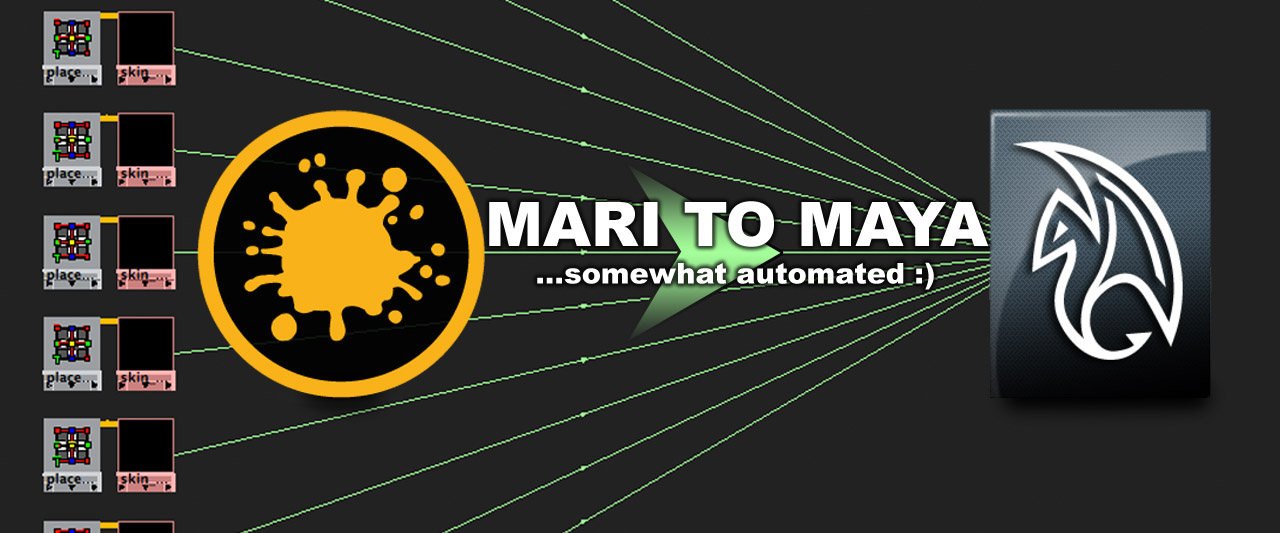Getting textures from Mari to Maya is pretty straight forward. Once you understand the Workflow it’s pretty fast. But what if you have a complex model, or even multiple models, each with multiple channels and lot’s of UV-Patches? It can be VERY time-consuming setting up each and every texture by hand.
Luckily there is already a script on Creative Crash which does just that. However this doesn’t seem to work for some people, including me. I’m not techy enough to narrow the problem down and I could use a refresh of my scripting “skills” so I tried to make a similar script myself using Python.
I came up with something that works on everything I tested. However it does have a somewhat humble workflow due to my inability to script properly, so you have to do a few extra steps. :) So what does it do?
It’s basically doing a couple of things: It renames all the file nodes according to the name of the input file. On each connected place2dtexture node it then uses the name of the input file nodes, therefore setting the translation to put each patch in the right spot. For this to work, the files need to have the $UDIM flag at the very end of the file name when exporting the textures from Mari. After setting the default color to black on each file node it then connects them to a layered texture so they can be added up. At this stage you can connect that layeredTexture to your shader.
You use it this way:
-select the textures you want to have connected for one channel (e.g. diffuse, spec, etc.)
-graph those textures in the hypershade so that you see all the textures and their corresponding place2dtextures
-select all the file and placement nodes in the work area
-execute the script
So far it worked on a few scenes I tested. If you encounter problems, don’t hesitate to ask me! In any case you should first try to get the other script from Kushal Goenka which I linked in the top of this article. His one is more straight forward, my version of this script is mainly for people who cannot use the other script.
DOWNLOAD HERE
I hope somebody will find this helpfull! :)

Comments
Hey Julius,
I came across your website after finding the blog post about Linux on The Desktop (really good read by the way, very helpful!).
Just wanted to ask if this script you created is still relevant or will it need updating as we’re now quite a few years ahead of when you wrote this!
I’m currently in my 2nd year studying VFX in uni (with the aim of being a generalist to begin with and then potentially specialising) so bookmarking all useful tutorials, tools and info I can, this being one of them :)
Look forward to your reply
Thanks!
Hey Nick,
First of all thanks for the kind words!
This post was from a while back when the concept of UDIM’s where relatively new to the public and most renderers did not have direct support for it. These days most rendering engines come with a built in flag in the file input nodes that removes the necessity for creating all these manually or through custom scripts like this one.
I’d suggest just looking up the UDIM workflow for your renderer of choice as it’s most likely very straight forward :)
If you have any additional questions feel free to shoot me a message at any time!
All the best for your studies!
cheers,
Julius